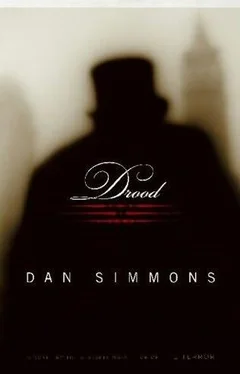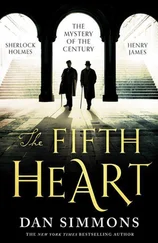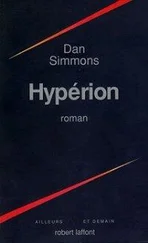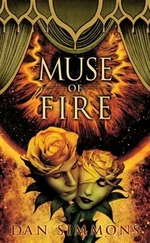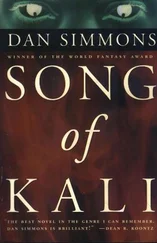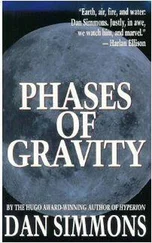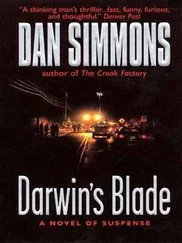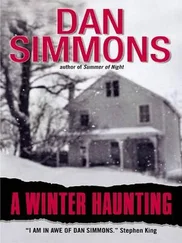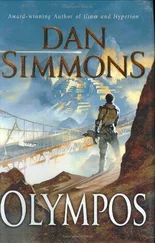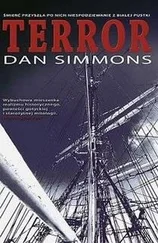After disembarking at Folkestone, Dickens, Ellen, and Mrs Ternan took the 2.38 tidal train to London. As they approached Staplehurst, they were the only passengers in their coach, one of seven first-class carriages in the tidal train that day.
The engineer was going full speed—about fifty miles per hour—as they passed Headcorn at eleven minutes after three in the afternoon. They were now approaching the railroad viaduct near Staplehurst, although “viaduct”—the name given the structure in the official railways guide—may be too fancy a word for the web of girders supporting the heavy wood beams spanning the shallow river Beult.
Labourers were carrying out a routine replacement of old timbers on that span. Later investigation—and I have read the reports—showed that the foreman had consulted the wrong timetable and did not expect the tidal train for another two hours. (It seems that we travellers are not the only ones to be confounded by British railway timetables with their infinite holiday and weekend and high-tide-time asterisks and confounding parentheses.)
A flagman was required by railway policy and English law to be stationed 1,000 yards up the rails from such work—two of the rails had already been lifted off at the bridge and set alongside the track—but for some reason this man with his red flag was only 550 yards from the gap. This did not give a train travelling at the speed of the Folkestone—London tidal express any chance of stopping in time.
The engineer, upon seeing the red flag so tardily waved and—a much more soul-riveting sight, I am sure—upon seeing the gap in rails and beams in the bridge ahead, did his best. Perhaps in your day, Dear Reader, all trains have brakes that can be applied by the engineer. Not so in our day of 1865. Each carriage must be braked individually and then only upon instructions from the engineer. He madly whistled for the guards along the length of the train to apply their brakes. It did little good.
According to the report, the train was still doing almost thirty miles per hour when it reached the broken line. Incredibly, the engine jumped the forty-two-foot gap and leaped off the track on the other side of the chasm. Of the seven first-class carriages, all but one flew free and plummeted to their destruction in the swampy riverbed below.
The surviving coach was the one carrying Dickens, his mistress, and her mother.
The guards’ van immediately behind the engine was flung to the other track, dragging the next coach—a second-class carriage—with it. Immediately behind this second-class carriage was Dickens’s coach and it jolted partially over the bridge as the other six first-class carriages flew by and crashed below. Dickens’s carriage finally ended up dangling over the side of the bridge, now being kept from falling only by its single coupling to another second-class carriage. Only the very rear of the train remained on the rails. The other first-class carriages had plummeted and crashed and rolled and buckled and generally been smashed to matchwood and splinters on the marshy ground below.
Dickens later wrote about these moments, in letters to friends, but always with discretion, taking care never to mention, except to a few intimates, the names or identities of his two fellow travellers. I am certain that I am the only person to whom he ever told the complete story.
“Suddenly,” he wrote in his more widely disseminated epistolary version of events, “we were off the rail, and beating the ground as the car of a half-emptied balloon might do. The old lady…” [We must read “Mrs Ternan” here] “… cried out, ‘My God!’ The young lady travelling with her [this is Ellen Ternan, of course] screamed.
“I caught hold of them both… and said: ‘We can’t help ourselves, but we can be quiet and composed. Pray don’t cry out!’
“The old lady immediately answered: ‘Thank you. Rely on me. Upon my soul I will be quiet.’ We were then all tilted down together in a corner of the carriage, and stopped.”
The carriage was indeed tilted steeply down and to the left. All baggage and loose objects had fallen down and to the left. For the rest of his life, Charles Dickens would suffer repeated spells of feeling as if “everything, all of my body, is tilted and falling down and to the left.”
Dickens continues his narrative:
“I said to the two women, ‘You may be sure that nothing worse can happen. Our danger must be over. Will you remain here, without stirring, while I get out the window?’ ”
Dickens, still lithe enough then at the age of fifty-three, despite his “frost-bitten foot” (as a long-time sufferer of gout, which has required me to partake of laudanum for many years, I know gout when I hear its symptoms, and Dickens’s “frostbite” was almost certainly gout), then clambered out, made the tricky jump from the carriage step to the railbed above the bridge, and reported seeing two guards running up and down in apparent confusion.
Dickens writes that he grabbed and stopped one of them, demanding of the man, “Look at me! Do stop an instant and look at me, and tell me whether you don’t know me.”
“We know you very well, Mr Dickens,” he reports the guard replied at once.
“Then, my good fellow,” cried Dickens, almost cheerily (at being recognised at such a time, a petty soul such as Clara Pitt Byrne might have interjected), “for God’s sake give me your key, and send one of those labourers here, and I’ll empty this carriage.”
And then, in Dickens’s letters to his friends, the guards did as they were bid, labourers laying down planks to the carriage, and then the author clambered back into the tilted coach and crawled down its length to retrieve his top hat and his flask of brandy.
I should interrupt our mutual friend’s description here just long enough to say that, using the names listed in the official railway report as my guide, I later tracked down the very guard that Dickens reports stopping and galvanising into such useful action. The guard—a certain Lester Smyth—had a somewhat different recollection of those moments.
“We were trying to get down to ’elp the injured and dying when this toff who’d climbed out of the teetering first-class coach runs up to Paddy Beale and me, all wild-eyed and pale, and keeps shouting at us, ‘Do you know me, man!? Do you know me!? Do you know who I am?? ’
“I admit that I replied, ‘I don’t care if you’re Prince Albert, mate. Get out of my bleedin’ way.’ It was not the usual way I’d speak to a gentleman, but that wasn’t no usual day.”
At any rate, Dickens did commandeer the work of some labourers to help extricate Ellen and Mrs Ternan, he did crawl back into the carriage to retrieve his flask and top hat, he did fill his top hat with water before clambering down the steep bank, and all witnesses agree that Dickens went immediately to work down among the dying and the dead.
IN HIS FIVE REMAINING YEARS after Staplehurst, Dickens would only say about what he saw in that riverbed—“It was unimaginable”—and of what he heard there—“Unintelligible.” This from the man generally agreed to have the greatest imagination, after Sir Walter Scott, of any English writer. And from a man whose stories were, if nothing else, always eminently intelligible.
Perhaps the unimaginable began when he was clambering down the steep embankment. Suddenly appearing next to him was a tall, thin man wearing a heavy black cape far more appropriate for a night at the opera than an afternoon’s voyage to London on the tidal train. Both men were carrying their top hats in one hand while grabbing at the embankment for balance with their free hands. This figure, as Dickens later described to me in a throaty whisper during the days after the accident when his voice “was no longer my own,” was cadaverously thin, almost shockingly pale, and stared at the writer from dark-shadowed eyes set deep under a pale, high brow that melded into a pale, bald scalp. A few strands of greying hair leapt out from the sides of this skull-like visage. Dickens’s impression of a skull was reinforced, he said later, by the man’s foreshortened nose—“mere black slits opening into the grub-white face than a proper proboscis” was how Dickens described it—and by small, sharp, irregular teeth, spaced too far apart, set into gums so pale that they were whiter than the teeth themselves.
Читать дальше
